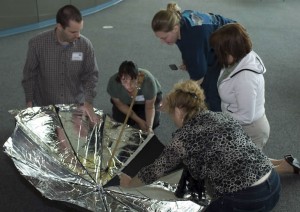U.S. Senators Bill Nelson and Mary Landrieu have introduced a resolution and bill pressing the U.S. Consumer Product Safety Commission to recall Chinese-made drywall and temporarily ban imports of the building material, as worries about the possible effects of the tainted product continue to grow. The bill would ask the Consumer Product Safety Commission to impose the ban until it can create federal drywall safety standards. It is clear that independent, third-party testing and certification has extensive value in the marketplace, especially for products such as drywall, solar water heating systems and solar electrical (photovoltaic) systems. Independent, third-party certification provides not only protection for consumers, but also much needed consumer confidence. Even more important, third-party certification provides protection to reputable manufacturers, ensuring that lower quality products, often from foreign markets, do not compete head-to-head with Florida and U.S. products unless they meet the same standards. The state of Florida had the foresight to protect Florida in 1976 through Florida’s Solar Energy Standards Act of 1976 (§377.705 F.S.) which requires the Florida Solar Energy Center to certify that “all solar energy systems manufactured or sold in the state…meet the standards established by the center and…display accepted results of approved performance tests in a manner prescribed by the center.”
Governor Crist’s climate change agenda, many states passing “real renewable energy portfolio standards,” and skyrocketing electric prices have led to strong interest in solar hot water heating. Residential electricity in Florida moved from 8 cents to 10 cents and then to 12 cents a kWh in January 2006. In the last several months, the price of electricity to some consumers in Florida has reached 15 cents a kWh! The average Florida customer who used 1,250 kWh of electricity per month paid $120 in 2005 and $152 per month in 2008. In 2009 they may be paying more than $160. So, by doing nothing, the price has gone up $40 per month (33%) since 2005!

